Eat, Stay, Shop
An in-depth response to the convergence of luxury hospitality, retail and the arts, exploring the unique challenges and opportunities luxury hoteliers and retailers face in today’s world. Matter Of Form CEO, Anant Sharma, and renowned luxury commentator, Claire Wrathall, provide trend insights and key recommendations to give brands practical tools to truly harness digital to take advantage of shifting roles and customer expectations to avoid being left behind.
Contents:
01) Introduction
02) Blurring lines of hospitality and retail
03) The rise of the concept store
04) Furniture brands move into hotels
05) Hotels for art collectors
06) Hotels as retailers of fashion
07) Shopping as part of the experience
08) Delivering authentic customer experiences
09) Our recommendations
01) Introduction:

.
Luxury hoteliers and retailers face a unique set of challenges and tensions requiring a balancing act in order to retain and grow their hard-earned status and brand equity.
A perfect storm of globalisation, the meteoric rise of digital and ever evolving customer demands have left many luxury brands exposed. On the one hand there is the challenge of remaining exclusive and offering ultra-personalisation in a digital world where everything is available to everyone, seemingly instantaneously. On the other is the ever-present tension of harnessing digital strategies yet remaining sensitive to brand truths.
For luxury brands that have long traded on being the tastemakers of their industries, this is not something they can afford to mis-judge or an area where they should be perceived as followers rather than leaders. Not even well established luxury brands are safe from market disruption and changing consumer whims.
However, for every challenge luxury hoteliers and retailers face, there is also an opportunity. There is a wealth of untapped potential in terms of eCommerce, customer insight, partnerships, digital strategies and better use of physical retail space.
According to research from Walpole*, the top three most effective trends to lure luxury customers over the next five years will be:
– Exclusive collaborations with relevant partners
– Secret and exclusive brand experiences
– Personalised online experiences
This publication explores how the landscape for luxury hotel and retail brands is shifting, as hoteliers turn to retail and retail brands become hoteliers. It highlights the opportunities for brands going forward and outlines the steps luxury hoteliers and retailers alike need to take to better harness digital and blend it with the physical, to deliver the authentic new experiences consumers crave.
*Walpole: How to Attract the Luxury Consumer in 2020: A Report
.
02) Blurring lines of hospitality and retail
.

“a rich, engaging specialised experience full of discovery and excitement.”
.
César Ritz was the first hotelier to realise that wasted space in a hotel is a waste of money. Linking the two main buildings that constitute the Paris Ritz, which he opened in 1898, was a long corridor: the perfect space, he thought, for a shopping arcade. And thus the fabled Temptation Walk was born: a 120m-long arcade of 89 vitrines packed with jewels, shoes and desirable gewgaws. Its aim, said his wife, Marie-Louise, was ‘to tempt one at every step to buy, buy, buy’.
It endures to this day and, as do top-tier hotels the world over, continues to let concession space to established luxury brands, household names as well as less well-known specialists such as the Japanese purveyor of haute joaillerie Tasaki.
The Ritz, which also sells, on site and online, a wide range of Ritz-branded merchandise from its belle-époque bedside lights to Bar Hemingway glassware to its distinctive linens, may have been the outlier. But it is no longer alone in the strategic merchandising of its brand. These days practically every five-star strives to market goods to its guests. Four Seasons, Westin, Marriott, Ritz-Carlton, Hilton, Sheraton and Sofitel, for instance, all sell beds. (The exceptions are Hyatt, which closed its Hyatt at Home ‘online retail store’ last year; and Virgin Hotels, which has suspended the retail website launched to peddle its patented Virgin Lounge beds and Smeg mini-bar fridges.)
Travel disposes people to shop while they’re on the road. Just look at the way airports have morphed into malls. How else to account for the £1 million compensation British Airways is said to have paid Heathrow Airport Holdings when it opened its new First Wing at Terminal Five for those travelling in the nosecone and its Gold Executive Club members, in order to compensate the airport for the fact that its wealthiest customers would no long pass the terminal’s shops en route from security to the new lounge.
But as retail changes, and purchases are increasingly made online, so hotels can function as a showcase for a brand’s products, hence the fact that companies as diverse as Baccarat, Bulgari, Camper, Lalique, Ikea, next year even the US furniture brand Restoration Hardware, have hotels to their names. Muji, too, has announced that it will be opening hotels in China and Japan, minimally furnished with the brand’s products. The first, a 79-room property in Shenzhen, will be followed by one in Tokyo’s Ginza district, above what will become the brand’s new six-floor flagship store.
As Accenture’s report Painting the Digital Future of Retail and Consumer Goods Companies predicts, within the next decade ‘physical shops’ will cease to be ‘merely about product purchase’. Instead they will become ‘customer experience platforms’, offering ‘a rich, engaging specialised experience full of discovery and excitement’ in which interaction with products will be key.
How better then to create such experiences than by enabling potential customers to have first-hand contact with products by putting them in hotel rooms? How many of us first sampled what became our toiletries of choice in a hotel? As the Financial Times reported last year, ‘Nestlé’s marketers have long worked with luxury hotels to get its Nespresso coffee machines into their guestrooms, correctly deducing that customers would then want the “hotel experience” at home.’
.
03) The rise of the concept store
.

“to redefine luxury by offering a diversity of exclusive pieces, in single or very limited edition.”
.

‘We talked to our guests and found that a lot of them want to treat themselves to some retail therapy when they travel. It’s part of the experience. They said things like: “It’s only when I’m on holiday that I have time and the motivation to shop”. Most just wanted to be able to take something home with them to remind them of where they’d been. But others would say: “Can you design my apartment in the style of Le Bristol?” Eden Being is there to fulfil these requests.’ Eden Bing Oetker Collection
.
‘It’s really about special finds because we really want to support local brands and artisans who work close to our hotels.’
.
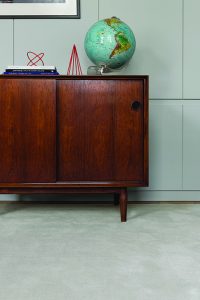
‘Hotels know dedicated merchandise can maximise revenue, but we believe that retail represents more than just an additional income stream. We think of it more as a complementary amenity that can enhance and reinforce tremendously the guest experience, especially in very remote locations where the guests are captive.’
.
In 1990, the fashion editor turned gallerist Carla Sozzani opened a gallery in a vacant garage at 10 Corso Como in Milan. She added a bookshop, café and shop selling carefully curated fashion, homeware and accessories. She wanted to create what she called ‘a living magazine’, and thus the ‘concept store’ was born. A hotel was the obvious next step. The result was 3 Rooms.
Though it has just three suites, its influence has been far-reaching in encouraging hotels to embrace retail as an additional revenue stream and guest experience. And not just at the top of the market. Even the self-styled ‘affordable’ brand CitizenM opened its first collectionM store in London last year.
Certainly in Paris, no ‘palace’ hotel would seem to want to be without one, ideally with a stellar curator’s name attached. When the Raffles Group reopened the Royal Monceau in 2010, it wanted to reassert the hotel’s arty credentials honed during its 1920s heyday. How better to achieve this than to incorporate a gallery, bookshop and concept store, the Royal Eclaireur, co-created by Philippe Starck.
In a similar vein, when Rosewood reinvented Hôtel de Crillon last summer, it too decided to devote two spaces on its ground floor to Le Cabinet de Curiosités de Thomas Erber, a personality-driven retail space conceived by a former journalist whom the hotel calls a ‘trend setter’ that strives, as Erber puts it, ‘to redefine luxury by offering a diversity of exclusive pieces, in single or very limited edition’, by mostly French designers.
At the same city’s Hotel Bristol, Daniela Ott, a former CEO of Tomas Maier and strategy director of Gucci, has created Eden Being, a standalone company, backed by James Matthews, CEO of Eden Rock Capital Management, that acts as the lifestyle and retail arm of the Oetker Collection of nine hotels worldwide. ‘We talked to our guests and found that a lot of them want to treat themselves to some retail therapy when they travel,’ says Ott. ‘It’s part of the experience. They said things like: “It’s only when I’m on holiday that I have time and the motivation to shop”. Most just wanted to be able to take something home with them to remind them of where they’d been. But others would say: “Can you design my apartment in the style of Le Bristol?” Eden Being is there to fulfil these requests.’
For the moment five of its hotels have permanent ‘physical’ boutiques, and there are occasional pop-ups in the others. ‘Every hotel is unique,’ she says, ‘so every boutique is tailor-made to its location to reflect that.’ As is its stock, there will be a few core ‘anchor brands’ (notably Balenciaga and Missoni), but ‘It’s really about special finds because we really want to support local brands and artisans who work close to our hotels.’
She cites Caterina Mina, ‘an ethical fashion brand from Brazil which has been selling extremely well in [their São Paulo property], so we have introduced it into some of our European boutiques and will put it online.’
The benefits are twofold: first that shoppers searching for something online might happen upon the site and be alerted to the hotels. And second that it enables guests to shop retrospectively for themselves and for gifts. ‘We had a guest at the Hôtel du Cap, who caught sight of one of our champagne buckets and told us she’d got engaged at the hotel and would love to buy one. You wouldn’t want to schlep something like that back, but now you can order one once you’re home and have it delivered.’
Six Senses, too, has bought into the idea of creating concept stores for its hotels, the first of which open in the group’s Thai properties this autumn. Indeed prior to joining the hotel company, its director of retail, Marie-Eve MacGoey, oversaw the development of Another Story, which she calls ‘the first real standout concept store in Bangkok’.
‘We wanted to change the perception of retail within the group,’ she says. ‘Hotels know dedicated merchandise can maximise revenue, but we believe that retail represents more than just an additional income stream. We think of it more as a complementary amenity that can enhance and reinforce tremendously the guest experience, especially in very remote locations where the guests are captive.’
At 80 to 100sqm, the ‘vibrant lifestyle retail destinations’ that she is creating won’t be huge, but they will nevertheless stock a mix of homeware, beachwear and ‘capsule collections’ locally manufactured in accordance with the brand’s sustainable procurement and manufacturing practices. ‘So when we are in Cambodia we will work with hip and cool Cambodian designers; in Thailand with Thai designers and so on.’ (Until recently Six Senses Zighy Bay in Oman used to host its own weekly souk, inviting craftspeople from local villages – many of them women – into the resort to sell pottery, basketwork and textiles.)
To reinforce a sense of urgency, MacGoey emphasises the exclusivity of what she plans to stock. ‘Guests won’t be able to buy what they find in our shops back home. And they won’t be able to buy them online, or not yet.’ Exclusivity is all. But then Six Senses guests are, she says, ‘individuals who want to be recognised as important and want a kind of personalisation both in the product and in the service of the purchase’.
.
04) Furniture brands move into hotels
.
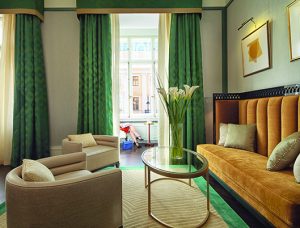
‘A human story behind it. I only want to make things, which have a soul’.
.

‘One of West Elm’s biggest successes is that every retail location they’ve done connects with the neighbourhood and has local makers furnish their stores. So each hotel will be very, very different. You’re not going to feel like you’re in a West Elm showroom.’
.
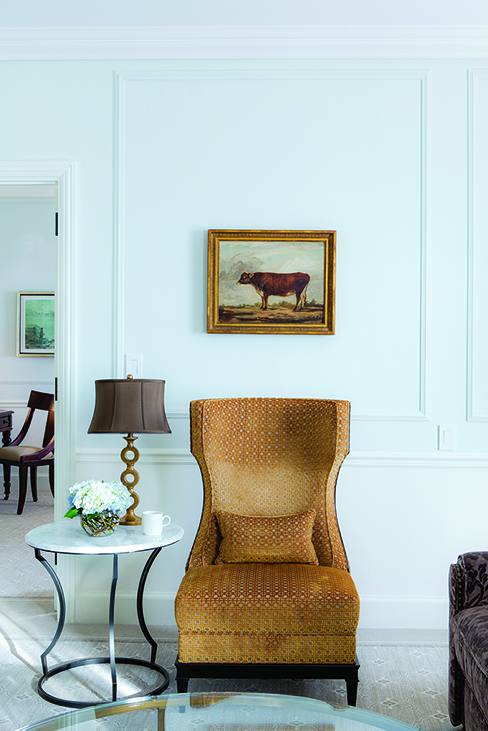
You cannot actually buy Fendi Casa furniture at Fendi Private Suites, which opened last year above its fur atelier and flagship store in Rome (though you can buy Fendi furs and fashion downstairs). But stay in one of its seven rooms, each furnished by the brand and hung with photographs by its creative director, Karl Lagerfeld, and you cannot help feel you are being ‘sold’ to not least by means of a library of promotional films on USB sticks you are urged to plug into your laptop. (Lagerfeld, incidentally, will be launching Karl Lagerfeld Hotels & Resorts in 2018, having entered into a long-term licence agreement with the Amsterdam-based hotel operator Brandmark Collective. ‘Expanding our brand into the hospitality sector reflects our greater vision to broaden Karl Lagerfeld’s comprehensive lifestyle experience,’ Pier Paolo Righi, CEO of the Karl Lagerfeld Group, said at the launch.)
In a similar vein, the Armani Hotels in Milan and Dubai, showcase Armani/Casa furniture, just as the two Palazzo Versace fly the flag for Versace Home.
Wilbert Das, the former creative director of Diesel, has, for instance, just launched a line of one-off pieces branded Uxua Casa, aimed at guests of his Brazilian hotel, Uxua in Trancoso on the Wilbert Das, the former creative director of Diesel, has, for instance, just launched a line of one-off pieces branded Uxua Casa, aimed at guests of his Brazilian hotel, Uxua in Trancoso on the Bahian, who wish to recreate the look of is casitas elsewhere. Each piece is unique and handmade and comes with, in Das’s words, ‘A human story behind it. I only want to make things, which have a soul’.
The Brooklyn-based furniture retailer West Elm is less obviously a luxury brand and has already collaborated with Marriott to create a range of furniture (also available online) for its US chain of SpringHill Suites hotels. In 2018, it will roll out the first of six hotels bearing its own name in US cities such as Detroit (where it will face competition from Shinola, the watch and bike brand, which is also developing a 130-room hotel in a ‘landmark’ building with, crucially, retail space).
Conscious that, as the company’s president, Jim Brett, told the Wall Street Journal, ‘Many retail brands have put the nail in their coffins by opening too many stores,’ branded hotels are both a way to showcase a brand’s products and a means of allowing potential customers to trial them. Not that there’ll be anything cookie-cutter about West Elm Hotels.
As David Bowd, co-founder of DDK, which will manage the hotels, sums up: ‘One of West Elm’s biggest successes is that every retail location they’ve done connects with the neighbourhood and has local makers furnish their stores. So each hotel will be very, very different. You’re not going to feel like you’re in a West Elm showroom’.
.
05) Hotels for art collectors
.
‘ The owner wanted to show high-quality original art [on the walls of the hotel] in keeping with the high standard to which it had been designed,’
.
There isn’t yet a higher-profile partnership than the one between the Oetker Collection’s Eden Rock Hotel on St Barths, which now hosts selling exhibitions in collaboration with two giants of the commercial art world, Gagosian and Galérie Perrotin, in its dedicated beachfront gallery. But in Accra, Ghana, the influential dealer in African art Gallery 157 opened its first space in the city’s Kempinski. While in Gurgaon, near Delhi, the influential Indian gallery Nature Morte, ran a satellite space in the Oberoi Hotel, for three years.
If those are simply about providing or letting space to galleries who wish to showcase their artists to an international audience, some of whom may be or wish to become collectors, at Severin’s, a ski hotel that opened in Lech Arlberg in Austria last winter, ‘The owner wanted to show high-quality original art [on the walls of the hotel] in keeping with the high standard to which it had been designed,’ says Valentin Kenndler, co-founder of the Vienna-based consultancy Contemporary Art Advisors. It consequently arranged for works by artists of the calibre of Julian Opie, Jim Dine and Roy Lichtenstein, all available to buy, to hang on its walls.
Indeed hotels are starting to deal directly too. Meanwhile The Thief, a member of Design Hotels in Oslo, not only shows works from its owners collection alongside loans from the Astrup Fearnley Museum opposite, it now has dedicated space from which it sells works by artists its in-house curators believe ‘are well on their way to becoming widely recognised household names’.
.
06) Hotels as retailers of fashion
.

‘It could be in New York. So we were able to bring in brands like Prada, Miu Miu, Dolce & Gabbana… as well as local designers of handmade pieces you wouldn’t find elsewhere. And it’s flying. It’s unbelievable how people want to spend when they’re on holiday.’
.
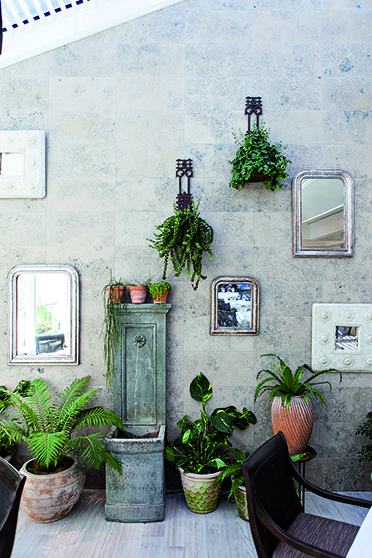
When John Steinbeck wrote about the new Sirenuse in Positano in 1953, he described the proprietor of this ‘first-class hotel’ as ‘a strong handsome man who dresses mostly like a beachcomber’. Two generations on, the beachwear aesthetic endures. Indeed the hotel has a resort fashion brand of its own created by Carla Sersale, granddaughter-in-law of its founder.
Launched in 2012, at first she sold it, along with pieces by established brands, from a boutique opposite the hotel. In time she opened a second shop.
Then a website was launched. And now Emporio Sirenuse is a fully fledged label stocked by Bergdorf Goodman in New York and Matches Fashion in London.
If it remains a small business, Cypress-based Thanos Hotels’ Kult retail brand is gaining ground on the company’s core hospitality offering. ‘When we opened our first hotel, Anassa [near Paphos], in 1998 we had a little shop for guests, selling beachwear, chocolate and stuff,’ says Natasha Michaelides, Thanos’s marketing and communications director. ‘But we realised that our guests, many of them extremely affluent, wanted to shop seriously. They had the time, the money and they wanted to buy clothes to wear in the hotel.’
They extended the shop into an adjoining room, but demand just intensified. So they constructed a separate 300sqm building, hired Paolo Giachi, who has designed stores for Prada, Jimmy Choo and Louis Vuitton et al, to spec it. ‘It’s a beautiful space,’ says Michaelides. ‘It could be in New York. So we were able to bring in brands like Prada, Miu Miu, Dolce & Gabbana… as well as local designers of handmade pieces you wouldn’t find elsewhere. And it’s flying. It’s unbelievable how people want to spend when they’re on holiday.’
So successful was it that they we opened a second smaller shop at Almyra, the group’s hotel in Paphos, which, ‘brings in a big flow of people from outside. First they go shopping, then they go for coffee in the hotel. Or they come back for dinner.’ In short a win-win, generating both revenue from existing guests and attracting new ones.
And they haven’t stopped there. To retain exclusivity as stockists of brands such as Bottega Veneta, Gucci, Jimmy Choo, Miu Miu, Prada, Saint Laurent and Stella McCartney, they needed a presence even where they don’t have hotels, so they now have Kult stores in Limassol and Nicosia too. ‘But it all started with a little shop at the Anassa.’
This is not a lone example, as a source from a luxury hotel in St Barth’s shared that they sell €800,000-€1 million-worth of designer swimwear each year, further highlighting the value of the discerning traveller.
.
07) Shopping as part of the experience
.
‘It’s been designed as a little village, a whole retail journey in the context of Singita. We’ve had guests say: I want that entire set up in my summerhouse in the Hamptons. I’ll buy it all – table, chairs, place settings, knives, forks. Please get it shipped to the US for me.’
.
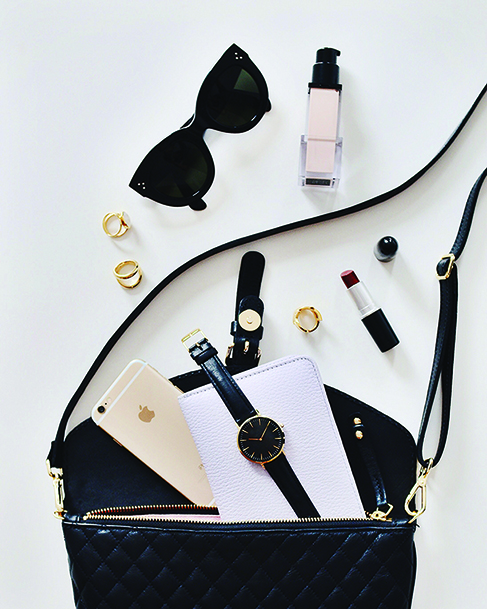
‘We regularly go into the local communities to see what traditional craftsmanship already exists, and then promote and direct these skills into marketable ideas and products. This also refines skill levels to match worldwide design standards. These talents an also be passed on to family members to support what are oftentimes single- breadwinner families.’ Singita Boutiques & Galleries
.
Talk to any hospitality-industry retail director, and the word ‘experience’ will arise, hence the trend for retail offerings where browsing genuinely amounts to something memorable.
Take the Mercantile as they call the shop at the Ranch at Rock Creek, a 19th-century ranch surrounded by 6,800 acres of wilderness in Montana. It looks straight out of a western, a barn-like space filled with Victorian vitrines stocking everything necessary to dressing like a cowboy: Stetsons, tooled boots, jeans, saddles, hunting knives… along with ‘basic sundries’. Browsing there is an education in rural life out in the still Wild West.
In the same vein, you will learn a lot about southern African tribal art browsing in one of Singita’s Boutiques & Galleries. ‘When Luke Bales and Mark Whitney started Singita [which now has 14 safari lodges in South Africa, Zimbabwe and Tanzania], they knew very little about hospitality, so they built a brand based on what they thought people would enjoy most,’ recalls its sales and marketing director, Lindy Rousseau. That included ‘a retail offering, but an authentic one, not a curio shop’.
So in partnership with Boyd Ferguson of the Cape Town design practice Cecile and Boyd, they founded a second brand, Boutique & Gallery, which Rousseau describes as ‘A journey through local art and culture [insofar as] almost everything you find in them you wouldn’t be able to find anywhere else and is sourced locally or in Africa.’
Unlike most hotel shops, you can’t just wander past and drop in. Rather you have to be driven to it. In Sabi Sands, for instance, it occupies an old colonial farmhouse (there’s a café on the veranda). In the Kruger National Park, ‘It’s been designed as a little village, a whole retail journey in the context of Singita. We’ve had guests say: I want that entire set up in my summerhouse in the Hamptons. I’ll buy it all – table, chairs, place settings, knives, forks. Please get it shipped to the US for me.’ They know, she adds, that they will probably never again encounter what they find here because much of the stock is commissioned locally from, for example, Zulu wire weavers working in KwaZulu Natal, or the Namji tribe in northern Cameroon, who carve dolls.
As Kim Rorich-Peter, the buyer and general manager of Singita Boutiques & Galleries puts it, ‘We regularly go into the local communities to see what traditional craftsmanship already exists, and then promote and direct these skills into marketable ideas and products. This also refines skill levels to match worldwide design standards. These talents an also be passed on to family members to support what are oftentimes single-breadwinner families.’
Indeed in its support for Shanga, for example, an enterprise in Tanzania that supports employment for people with disabilities from which it has commissioned glassware for its boutiques, its retail venture might also be seen to mesh with its record for community development and philanthropic work.
.
08) Delivering authentic customer experiences
.
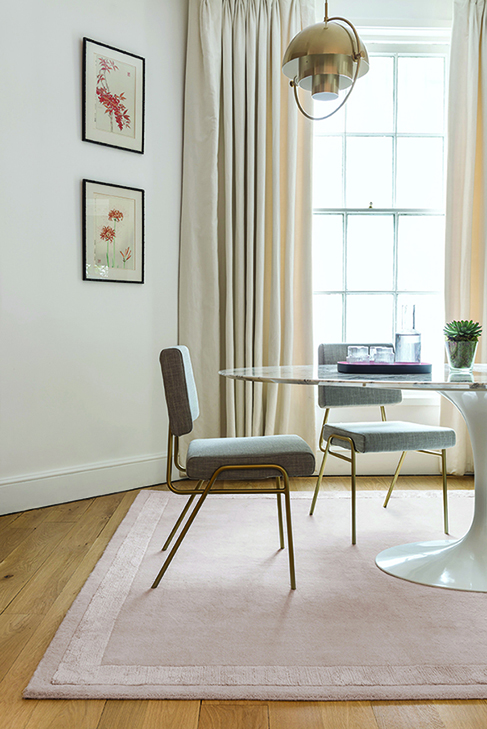
These examples demonstrate some of the key opportunities that many forward thinking brands in the hospitality and retail sector have capitalised on in order to drive market share by delivering the experiences customers increasingly crave.
The launch of concept stores such as Eden Being, Furniture Brands moving into the hotel space, partnerships like the one between the Eden Rock Hotel and Gagosian and the rise of fashion boutiques like Emporio Sirenuse – what these all have in common is not just additional revenue streams for hotel brands, they also offer (in the words of Pier Paolo Righi of the Karl Lagerfeld Group) “a comprehensive lifestyle experience”.
So how can luxury hoteliers and retailers further deliver new, authentic and innovative experiences that not only tap into all important emotional needs, but also drive sales?
It is clear that hospitality brands can benefit from retail specialists and vice versa. Using a ‘test and learn’ mantra will enable retailers and hoteliers alike to evaluate opportunities for demand generation.
.
09) Our recommendations
.
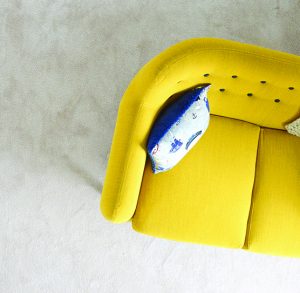
.
KNOW YOUR CUSTOMER
Ultra personalisation and constant innovation are expected as standard – especially from high net worth individuals. Yet all too often high net worth customers are lumped together as one entity with the same needs and desires. Brands can no longer afford to be complacent about their customer base or over sensitive about their CRM approach.
By undertaking proper customer journey mapping, brands will be able to identify the opportunities that are right for them, finding new and less obvious junctures to make a sale. For example, there is typically a latent 45 day period between first booking and arrival – this represents a unique opportunity to ‘drip feed’ content to the user, engendering loyalty and creating a predisposition to purchase even before guests have arrived.
In summary, a modern brand process is about more than simply defining purpose, vision or design assets. It is a system for operations, that has a deep understanding of persona types and their points of interaction with the brand, helping identify new commercial opportunities.
By designing these ‘Brand Interactions™’ blueprints, we can identify the correct moments for content delivery, commerce and digital or physical services to be delivered.
. .
.
DIG DEEP WITH YOUR DATA
Hoteliers should consider digital strategies that strive to capture smart feedback to help inform the product merchandising mix; most importantly brands should see every point of interaction as an opportunity to gauge guest sentiment.
The importance and value of data cannot be stressed enough. Personalised and curated customer experiences, brand partnerships, emotive narratives – none of these things can be truly effective without a robust data strategy to back them up.
Traditionally, luxury brands have shied away from properly capitalising on the business intelligence that a well executed, measurable data strategy can bring and this is something that needs to change. There is a huge opportunity for luxury hoteliers and retailers to gather key customer data, especially as the lines between their services continue to overlap.
A vital part of any data strategy needs to be a commitment to breaking down internal silos. All too often, data sits in pockets with no joined up approach to gathering and analysing it. By implementing a data intelligence roadmap, not only can intelligence be shared more freely across departments, it is also easier to benchmark performance. Equally as key, is ensuring buy in for any data strategy from the leadership team. This includes gaining their support in making sure there is sufficient resource and skill available to successfully deliver the data strategy.
One tactic might be in the design of a smart metadata structure that goes beyond basic demographic, booking or spend data.
Artificial intelligence can also be used to create self-regenerating ‘personality profiles’ – for example, the guest conservative or open-minded and what corresponding products might resonate?
CONTENT IS KING
For hoteliers, developing a proactive, confident content strategy will help facilitate seamless sales online. Perfectly positioned to transform into lifestyle brands, hoteliers must ensure that all global initiatives across brand, digital, marketing and PR are centrally managed, and have a well designed ‘home’ online.
People make purchases based not on necessity but on emotion, and this is especially true when it comes to luxury products and experiences. To tap into these emotions, brands need to craft narratives that fulfil a psychological need.
This in turn ties back to the importance of sentiment-based segmentation as brands can’t effectively tune into their customer’s emotions unless they know what drives them.
STAND FOR SOMETHING
Millennial and Gen X audiences empathise with confident brands who stand for something and mean something to someone rather than nothing to everyone. Many heritage luxury brands are currently failing to do this well. This represents a unique opportunity for hoteliers to build commercial and curatorial relationship with a trusting, captive audience in a foreign and often unfamiliar domain. This is a hugely valuable point of interaction, but one that must be treated with the utmost respect.
Brands have an opportunity to act as representatives of local cultures and crafts. Supporting content strategies should progressively disclose bite-sized information, fun facts and culturally relevant snippets through their digital user journeys and physical service offerings. By owning the broader customer experience this often reveals several touch-points and opportunities for interaction that can be unique and ‘ownable’ to the brand.
.
FINAL THOUGHTS
As this feature demonstrates, there are a huge range of exciting and tangible opportunities for hotel and retail brands to capitalise on a shifting landscape. However, there is a lot to learn if both parties are to perfect their forays into new areas without eroding brand equity or seeming overtly commercial. What is clear is that if they want to continue their tradition of trend setting, luxury brands need to reimagine their approach to customer experience, creating and capitalising on new moments in which to deliver services, commerce and delight-engendering longer lasting and profitable relationships. Or run the risk of getting left behind.
.
Matter Of Form – Luxury Brand, Design & eCommerce Agency
Matter Of Form are an award winning strategic consultancy and digital delivery firm who deliver category leading brand experiences. They help Make Change Effective through disruptive thinking, user centred design and technology; helping their partners navigate a fast moving world with taste and candour. The agency uses a unique Brand Interactions™ methodology to organise moments of service, delight and commerce across the customer experience.
Matter Of Form have hospitality and retail specialist teams, and work with the likes of Aman, Belmond, Maybourne, Doyle, Affordable Art Fair, Rug Company, The New Craftsman, Farfetch and Banham amongst others.
Claire Wrathall
Author
Anna Wintour gave Claire her first job in journalism when she joined the British edition of Vogue. She moved on to work for various newspapers and in 1997 launched Condé Nast Traveller, where she was managing editor.
Claire writes on travel, art and philanthropy for the Financial Times, How To Spend It and the Telegraph. She won APA Journalist of the Year in 2007 for a series of pieces for the British Airways magazine High Life and she has also edited and consulted on numerous contract titles and launches for clients in the UK, US and Germany.
Claire writes on travel, art and philanthropy for the Financial Times, How To Spend It and the Telegraph. She won APA Journalist of the Year in 2007 for a series of pieces for the British Airways magazine High Life and she has also edited and consulted on numerous contract titles and launches for clients in the UK, US and Germany.
Anant Sharma
Matter Of Form CEO
Anant founded Matter Of Form 8 years ago. Anant’s speciality is in combining brand strategy, user centric design and forward thinking technology. His ruthless focus on conversion is balanced by a drive to build long term, sustainable brand equity in the organisations he works with.
His agency have won multiple awards for design and innovation, and he has written and spoken extensively on topics ranging from user experience through to retail strategy, internationalisation, business and technology innovation.
Acknowledgements
Matter Of Form wishes to thank The Rug Company and Belmond for their photography contributions.









